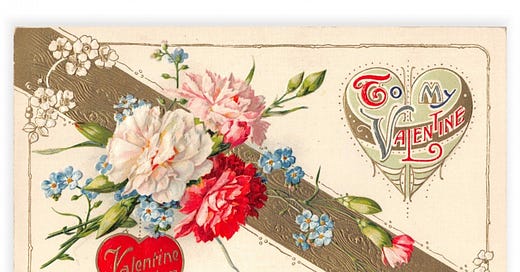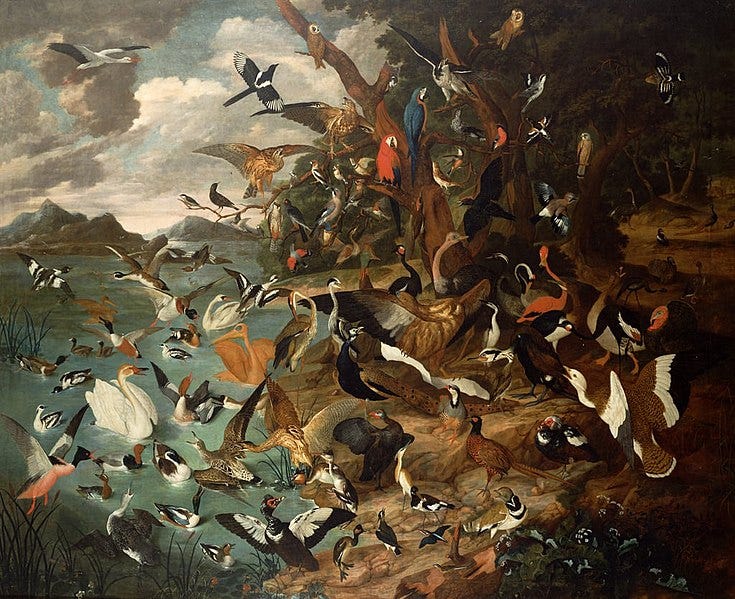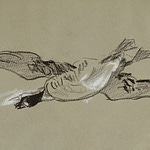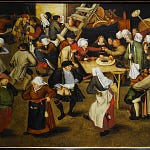Our Friday podcast is open to everyone in this week, in honor of Saint Valentine’s Day. Click on the image below for a special gift discount today.
.When did young lads and lasses begin to give each other presents on February 14? All the way back in the French courts in the high Middle Ages, it seems – and those French courts included the ones in England! For you must remember that the descendants of the Vikings who came to England in 1066 to claim the royal throne spoke French – the French of Normandy, where the North-men, the Normans, had settled down. Those Normans, by the way, really got around: they ruled Sicily for a while, and they’re likely responsible for a lot of blond hair and green eyes in southern Italy. Anyway, the tradition had it that birds started to pair off on Saint Valentine’s Day, February 14, and if that sounds rather early to you, you should keep in mind that Europe was warmer in those years than it is now. The same nice weather that made it possible for other Vikings to grow barley on the coasts of Greenland made the woods in England ring out with birds choosing mates in February. And then, even after the weather got colder after 1300, the tradition was well-established. It’s the day when Chaucer sets his whimsical poem, The Parliament of Birds (1381) – they’re chattering about love, of course, and what kind of love is best, with the noble eagles bickering against the lusty sparrows and the dimwit cuckoo, all in front of the goddess Nature, and she ends it by giving every bird its mate, while the best singers sing a sweet song in honor of Saint Valentine, and love, and the coming summer with its gentle sun.
In 1477, we have a charming letter from Lady Elizabeth Brews, encouraging a young cousin of hers, John Paston, to come by and press his suit for her daughter Margery’s hand in marriage. “And, cousin,” she says, “upon Monday is Saint Valentine’s Day and every bird chooses a mate, and if you would like to come on Thursday night, and see to it that you stay till then, I trust to God that you shall speak to my husband and I shall pray that we may bring the matter to a conclusion. For, cousin, ‘It is but a simple oak / That is cut down at the first stroke.’” And young Margery herself wrote to John and called him her Valentine, and they did end up getting married.
If you were in England back in the 1700’s, you might have celebrated Saint Valentine’s Day by a custom that I think we really ought to revive. The boys put their names in one hat, and the girls put their names in another, and then they each picked out a name from the other hat. The boys were supposed to give presents to the girls they had picked. I like the custom, because it relieves everybody of a lot of pressure, and it makes sure that everybody will have somebody to flirt with. These days, a boy hardly knows how to approach a girl, because nobody knows what the moral rules are; the guard-rails are down, there’s no speed limit, no lane marker, no signs; more like a demolition derby than anything. So how about it, our readers who believe in courtship and marriage?
The Valentine, of course, is named after Saint Valentine, though there’s some doubt as to who he was or which man he was, since there were two or three men by that name who died as martyrs for the faith at around the same time, in the middle of the third century. The name VALENTINUS is a diminutive for the name VALENS, just as CONSTANTINUS is diminutive for CONSTANS, and MARTINUS is diminutive for MARS. Now, VALENS comes from an ancient Indo-European root meaning strong, mighty, and this root has offspring all over the place, in all the great branches of the family, especially in names for boys. It really does put the HOT in HOTTENTOT! It gives us the VLAD in Russian VLADIMIR, and the WALT in German WALTHER, and the -ALD in Scottish DUFENALD, which becomes English DONALD. In fact, if your name is DONALD, RONALD, ARNOLD, GERALD, HAROLD, and quite a few others, you’re in this good company. So go and get yourself a VALENTINE, if you haven’t already done so! What are you waiting for, a talking eagle?














Share this post